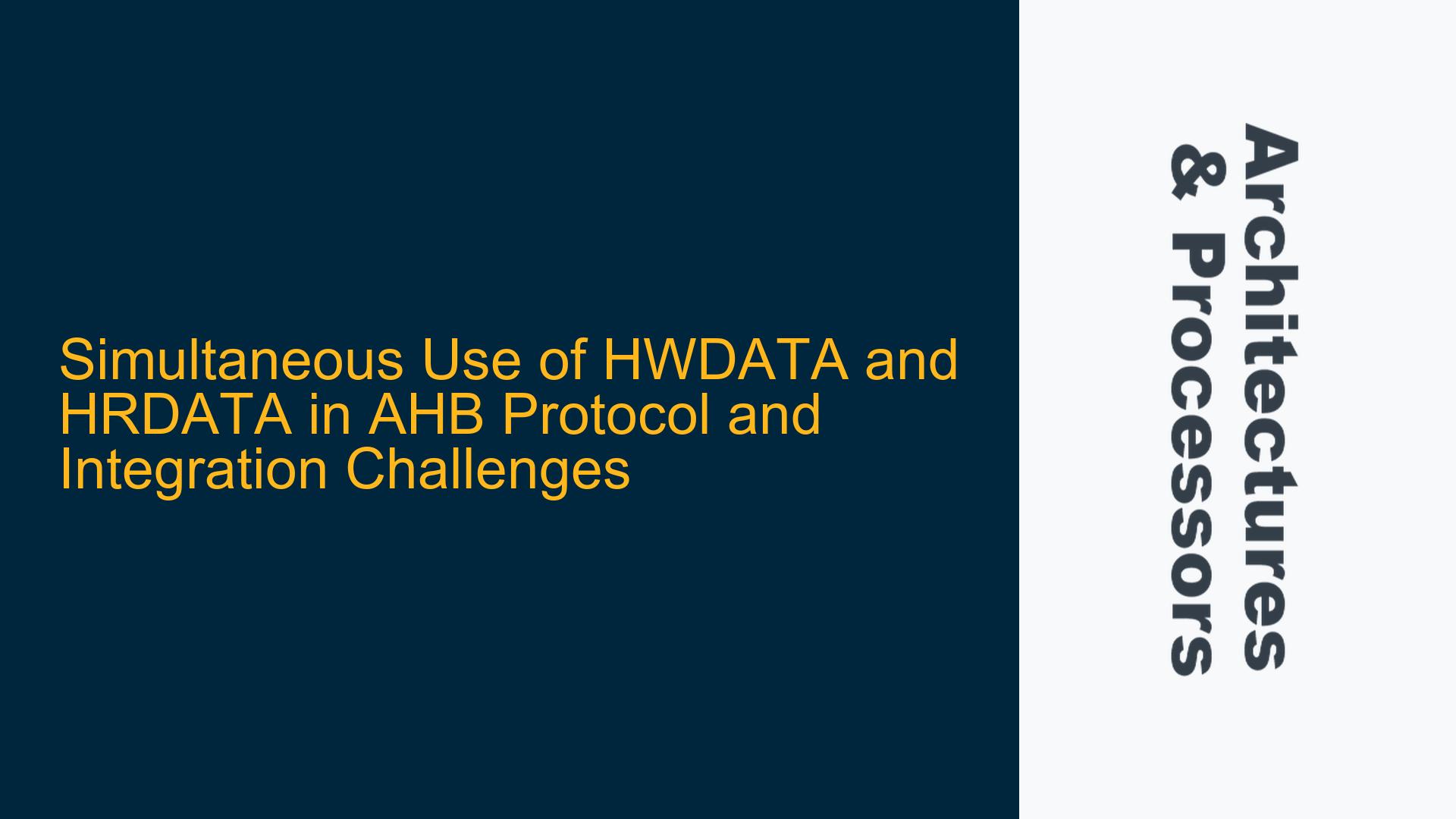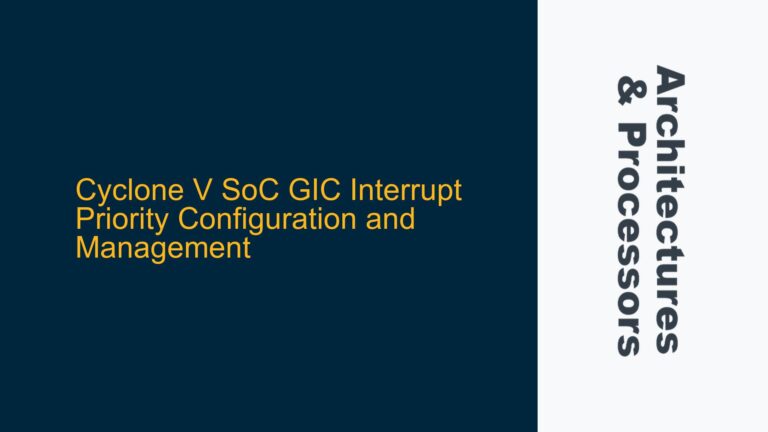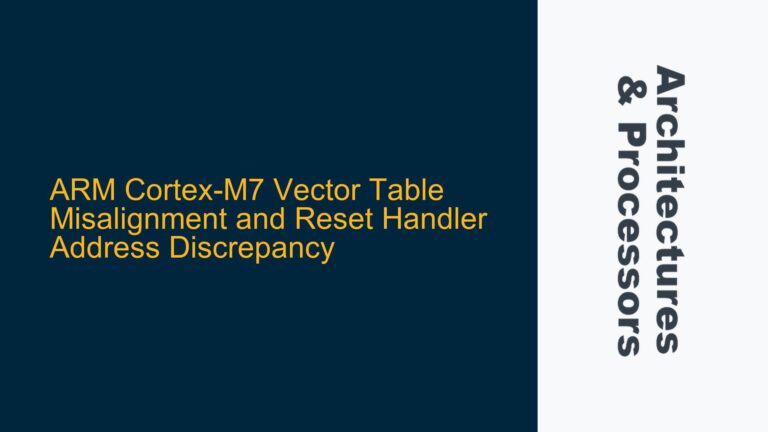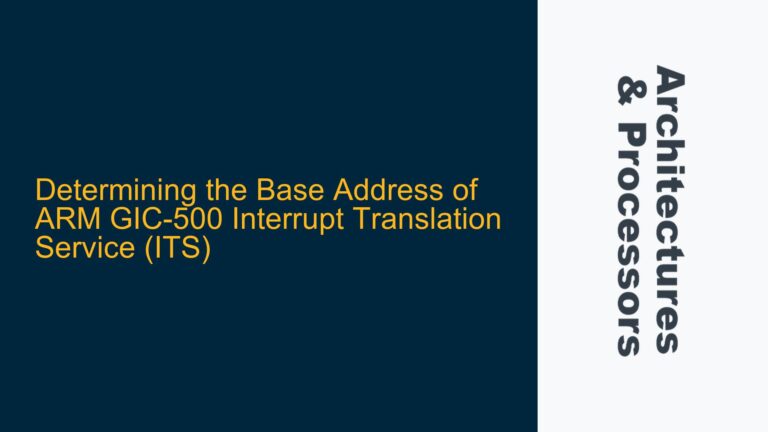AHB Protocol Constraints on HWDATA and HRDATA Usage
The Advanced High-performance Bus (AHB) protocol, part of the ARM AMBA (Advanced Microcontroller Bus Architecture) family, is designed to facilitate efficient data transfers between masters and slaves in a system-on-chip (SoC). A critical aspect of the AHB protocol is its handling of data buses, specifically the HWDATA (write data) and HRDATA (read data) signals. These signals are fundamental to the read and write operations within the AHB framework.
The AHB protocol explicitly mandates that read and write operations are mutually exclusive within a single bus cycle. This means that during any given bus cycle, only one of the two data buses, HWDATA or HRDATA, will be actively used. The protocol does not support simultaneous read and write operations within the same cycle, as this would introduce significant complexity and potential timing violations. The separation of HWDATA and HRDATA into distinct buses is a deliberate design choice to avoid the need for turnaround cycles, which were a characteristic of the older ASB (Advanced System Bus) protocol. Turnaround cycles introduce latency and complicate the timing requirements for bus drivers, which is contrary to the high-performance objectives of the AHB protocol.
In practical terms, this means that when a master initiates a write operation, the HWDATA bus is used to transfer data from the master to the slave. Conversely, during a read operation, the HRDATA bus is used to transfer data from the slave back to the master. The protocol ensures that these operations are temporally separated, preventing any overlap that could lead to bus contention or data corruption.
Implications of Shared Data Bus in AHB Integration
The question of whether HWDATA and HRDATA can be used simultaneously arises in the context of integrating an AHB interface with a processor that has a shared data bus for both input and output operations. This scenario presents a significant challenge because the AHB protocol’s design assumes separate data buses for read and write operations. Attempting to multiplex a single shared data bus to serve both HWDATA and HRDATA functions would inherently violate the AHB protocol’s constraints.
The primary issue with using a shared data bus in an AHB-compliant system is the introduction of turnaround cycles. In a shared bus architecture, the direction of data flow must be switched between read and write operations, necessitating a period where the bus is neither reading nor writing to allow for the transition. This turnaround period introduces latency and complicates the timing requirements for the bus drivers. In high-performance systems, where minimizing latency is crucial, this added complexity is undesirable.
Moreover, the AHB protocol’s timing specifications are predicated on the assumption of separate data buses. The setup and hold times for data signals are defined with this separation in mind. Introducing a shared bus would require re-evaluating these timing constraints, potentially leading to violations that could compromise the integrity of data transfers. The protocol’s robustness relies on the clear separation of read and write operations, and any deviation from this separation risks introducing errors that could be difficult to diagnose and resolve.
Strategies for AHB Interface Integration with Shared Data Bus Processors
Given the constraints imposed by the AHB protocol, integrating an AHB interface with a processor that has a shared data bus requires careful consideration and design. The key challenge is to reconcile the processor’s shared bus architecture with the AHB protocol’s requirement for separate read and write data buses. This can be achieved through the implementation of local interface logic that effectively separates the shared bus into distinct HWDATA and HRDATA buses.
The first step in this process is to design an interface block that sits between the processor’s shared data bus and the AHB interface. This block must be capable of demultiplexing the shared bus into separate read and write data paths. During a write operation, the interface block must route the data from the processor’s shared bus to the HWDATA bus of the AHB interface. Conversely, during a read operation, the block must route the data from the HRDATA bus of the AHB interface to the processor’s shared bus.
The interface block must also manage the timing requirements to ensure that data is correctly transferred without violating the setup and hold times specified by the AHB protocol. This involves implementing control logic that coordinates the direction of data flow and ensures that the shared bus is correctly switched between read and write modes. The control logic must also handle any necessary turnaround cycles, ensuring that the transition between read and write operations does not introduce timing violations.
In addition to the interface block, it may be necessary to modify the processor’s internal logic to accommodate the AHB interface. This could involve adding additional control signals to manage the direction of data flow on the shared bus or modifying the processor’s memory access logic to align with the AHB protocol’s requirements. These modifications must be carefully designed to ensure that they do not introduce new timing or functional issues within the processor.
The integration of an AHB interface with a processor that has a shared data bus is a complex task that requires a deep understanding of both the AHB protocol and the processor’s internal architecture. By carefully designing the interface logic and making necessary modifications to the processor, it is possible to achieve a compliant and efficient integration that meets the performance requirements of the system. However, this process requires meticulous attention to detail and a thorough understanding of the timing and functional requirements of both the AHB protocol and the processor.
Detailed Analysis of AHB Protocol Timing and Data Flow
To fully understand the challenges of integrating an AHB interface with a processor that has a shared data bus, it is essential to delve into the timing and data flow characteristics of the AHB protocol. The AHB protocol is designed to support high-performance data transfers with minimal latency, and its timing specifications are critical to achieving this objective.
The AHB protocol operates on a clocked basis, with all signals synchronized to the rising edge of the clock. The protocol defines specific timing requirements for the assertion and deassertion of signals, including the HWDATA and HRDATA buses. These timing requirements ensure that data is correctly sampled and transferred between the master and slave devices.
During a write operation, the master asserts the HWDATA bus with the data to be written, along with the appropriate control signals such as HWRITE (indicating a write operation) and HADDR (the address to which the data is to be written). The slave device samples the HWDATA bus on the rising edge of the clock and writes the data to the specified address. The timing of the HWDATA bus is critical, as the data must be stable and valid at the time it is sampled by the slave.
During a read operation, the master asserts the HADDR bus with the address from which data is to be read, along with the appropriate control signals such as HWRITE (indicating a read operation). The slave device responds by placing the requested data on the HRDATA bus, which the master samples on the rising edge of the clock. The timing of the HRDATA bus is equally critical, as the data must be stable and valid at the time it is sampled by the master.
The AHB protocol’s timing requirements are designed to ensure that data is correctly transferred without contention or corruption. The separation of the HWDATA and HRDATA buses is a fundamental aspect of this design, as it eliminates the need for turnaround cycles and simplifies the timing requirements for the bus drivers.
Challenges of Shared Data Bus in AHB Integration
The integration of an AHB interface with a processor that has a shared data bus introduces several challenges that must be addressed to ensure compliance with the AHB protocol. The primary challenge is the need to manage the direction of data flow on the shared bus, which must be switched between read and write operations. This switching introduces additional complexity and potential timing issues that must be carefully managed.
One of the key challenges is the need to implement turnaround cycles when switching the direction of data flow on the shared bus. In a shared bus architecture, the bus must be temporarily idle during the transition between read and write operations to avoid contention between the drivers. This idle period, known as a turnaround cycle, introduces latency and complicates the timing requirements for the bus drivers.
The AHB protocol’s timing specifications are designed with the assumption of separate data buses, and the introduction of turnaround cycles can lead to violations of these specifications. For example, the setup and hold times for the HWDATA and HRDATA buses are defined with the assumption that the buses are always driven in the same direction. Introducing turnaround cycles can lead to situations where the data is not stable and valid at the time it is sampled, leading to data corruption.
Another challenge is the need to manage the control signals that coordinate the direction of data flow on the shared bus. These control signals must be carefully designed to ensure that they correctly indicate the current mode of operation (read or write) and that they do not introduce additional timing issues. The control signals must also be synchronized with the clock to ensure that they are correctly sampled by the slave device.
Solutions for AHB Interface Integration with Shared Data Bus Processors
To address the challenges of integrating an AHB interface with a processor that has a shared data bus, several solutions can be implemented. These solutions involve careful design of the interface logic and modifications to the processor’s internal architecture to ensure compliance with the AHB protocol.
One solution is to implement a local interface block that sits between the processor’s shared data bus and the AHB interface. This interface block is responsible for demultiplexing the shared bus into separate read and write data paths and managing the direction of data flow. The interface block must include control logic that coordinates the switching of the shared bus between read and write modes and ensures that the timing requirements of the AHB protocol are met.
The control logic in the interface block must be designed to handle the turnaround cycles required when switching the direction of data flow on the shared bus. This involves implementing a state machine that manages the transition between read and write operations and ensures that the bus is correctly idle during the turnaround period. The state machine must also ensure that the control signals are correctly asserted and deasserted to indicate the current mode of operation.
In addition to the interface block, it may be necessary to modify the processor’s internal logic to accommodate the AHB interface. This could involve adding additional control signals to manage the direction of data flow on the shared bus or modifying the processor’s memory access logic to align with the AHB protocol’s requirements. These modifications must be carefully designed to ensure that they do not introduce new timing or functional issues within the processor.
Another solution is to use a dual-port memory interface to separate the read and write data paths. In this approach, the processor’s shared data bus is connected to a dual-port memory, with one port dedicated to write operations and the other port dedicated to read operations. The AHB interface is then connected to the dual-port memory, with the HWDATA bus connected to the write port and the HRDATA bus connected to the read port. This approach eliminates the need for turnaround cycles and simplifies the timing requirements for the bus drivers.
The dual-port memory approach has the advantage of providing a clear separation between read and write operations, which aligns with the AHB protocol’s requirements. However, it also introduces additional complexity and cost, as dual-port memory is more expensive and requires more area on the chip. The choice of solution will depend on the specific requirements of the system and the trade-offs between complexity, cost, and performance.
Conclusion
The integration of an AHB interface with a processor that has a shared data bus is a complex task that requires a deep understanding of both the AHB protocol and the processor’s internal architecture. The AHB protocol’s requirement for separate read and write data buses presents a significant challenge, as it conflicts with the shared bus architecture of the processor. However, by carefully designing the interface logic and making necessary modifications to the processor, it is possible to achieve a compliant and efficient integration that meets the performance requirements of the system.
The key to successful integration is the implementation of a local interface block that demultiplexes the shared bus into separate read and write data paths and manages the direction of data flow. This interface block must include control logic that handles the turnaround cycles required when switching between read and write operations and ensures that the timing requirements of the AHB protocol are met. In addition, it may be necessary to modify the processor’s internal logic to accommodate the AHB interface, including adding additional control signals or modifying the memory access logic.
The choice of solution will depend on the specific requirements of the system and the trade-offs between complexity, cost, and performance. By carefully considering these factors and implementing the appropriate design strategies, it is possible to achieve a successful integration of an AHB interface with a processor that has a shared data bus.






